Samsung NX10 is now updated with Version 1.15 firmware ,EVF selection function on the AMOLED display menu, MF assist on/off function and MF usage function,SD card read/write speed and many more….
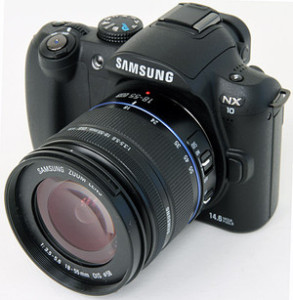
Lining up to do battle with the small, interchangeable lens Olympus and Panasonic Micro Four Thirds system cameras (EP-1, EP-2 and GF1, respectively), the mirrorless NX10 is like nothing in the current Pentax lineup, right down to its proprietary NX bayonet lens mount. Well, the 14.6 megapixel APS-C sized CMOS sensor might have been borrowed from the K20D and GX20 cameras, but that’s about it. That sensor produces a 1.5x crop factor with any lenses mounted on the camera.
he Samsung NX10 firmware v1.15 is described in detail (including installation instructions) on the UK-based Samsung Electronics website. The new firmware is said to include improvements in Secure Digital card read / write speeds, as well as in automatic white balance in some conditions. There are also several new menu options, including an EVF selection function, an option to enable or disable MF Assist, and an MF Usage function for use with the K-mount adapter. As with previous releases, overall stability is said to have been improved, but with no specifics given.
Besides the lack of a mirror box and pentaprism that contribute to the NX10’s small size, there’s a 3.0-inch AMOLED (active-matrix organic light-emitting diode) monitor that promises better visibility in bright outdoor conditions along with a faster refresh rate and higher contrast than the typical LCD monitor. Unlike the competition, an electronic viewfinder is built in, not an optional add-on. A 720p HD video capability is onboard and still images can be captured in JPEG or RAW formats. Face detection technology and automatic sensor cleaning are available and Samsung also promises fast AF performance and easy-to-use menus. The GX10 is marginally larger and heavier than the competition, but it’s a matter of no more than a half inch and a couple of ounces.
Can Samsung be a contender in the ’serious’ prosumer camera space? The answer is a resounding yes! Samsung’s NX10 hybrid camera is one of the most exciting interchangeable lens EVF (Electronic View Finder) cameras in the market today. Together with Olympus and its Digital PEN line, Panasonic and its G1, G2, GF1 and GH1 cameras and Sony with its upcoming NEX line of compact cameras, Samsung is betting big on the next gen hybrid camera party. These smaller cameras and lenses are challenging the older, bulkier DSLR cameras.

The camera uses SD/SDHC memory media and Samsung will guarantee performance with SD cards to 4 gigabytes (GB) and 8 GB for SDHC. Samsung provides a battery and charger, camera strap, a fairly comprehensive printed “quick start” manual, USB cable and CD-ROM software with each camera. Conspicuously absent is an A/V cable, which is listed as an “optional” accessory. One note about the quick start manual and full user’s manual (found on the CD-ROM): the indexes are arranged alphabetically, but within each letter index, the order of subjects is based on location in the manual, not alphabetical order. For example, the letter “S” index starts with shooting mode, subject, status lamp (pages 4, 6 and 12, respectively), rather than Samsung master, Samsung raw converter and scene mode.
Since the NX10 has an all-new lens mount, this means that you’ll have to buy all new lenses to go along with it (well, that’s not completely true, but I’m getting ahead of myself). There are currently three NX lenses on the market: the F3.5-5.6, 18 – 55 mm lens (with optical image stabilization) that comes bundled with the camera, an F2.0, 30 mm pancake lens, and an F4.0-5.6, 50 – 200 mm zoom with OIS. The pancake and 50 – 200 mm lenses feel a bit better built than the 18 – 55, with metal lens mounts, instead of plastic. Image quality was good with all three lenses, though the 18 – 55 had noticeable blurring on the right side of the frame at times.
The Samsung NX10 is exceptionally well designed and fabricated. Despite a smaller footprint and a reduced grip, the camera feels balanced even for one-handed operation.
Samsung had three NX lenses available when the camera reached market: a 30mm pancake, 18-55 zoom and 50-200 zoom, with the latter two being stabilized. Not a bad lineup for a new camera right out of the box, and Samsung has already announced five additional lenses for release this year: 20mm pancake, an unstabilized 18-55, 20-50, 18-200 (stabilized) and a 60mm macro. Samsung had an NX10 with an adapter for Pentax “K” mount lenses on display at the PMA show, but as of this writing that piece still does not appear on Samsung’s website. Samsung was kind enough to include the 18-55, 30 and 50-200 lenses with our review camera.
Samsung has announced that five more lenses are coming in 2010: a non-stabilized version of the kit lens, plus 20 – 50 mm compact zoom, 20 mm pancake, 60 mm macro, and 18 – 200 mm zoom lenses.Whichever lens you choose, there’s a 1.5X focal length conversion to keep in mind, so the 18 – 55 mm kit lens has a field-of-view of 27 – 82.5 mm.Samsung’s regular digital SLRs were basically re branded versions of various Pentax models. To help move those customers to the NX10, Samsung offers a K-mount adapter (known as the MA9NXK), which retails for around $200. While details are still a bit sparse on this adapter, my understanding is that it will not support autofocus.
The included lens, while completely made out of plastic except for the glass lens elements, feels a little cheap but this isn’t uncommon. The kit lens that ships with the Olympus E-PL1 is similarly scaled down in quality.
While the Panasonic and Olympus Micro Four Thirds cameras share a retro, boxy look, the NX10 is configured as a mini-DSLR. Vive le difference! The built-in viewfinder on the NX10 is a big plus over competitors’ add-on options if, like me, you prefer a viewfinder to the monitor for most of your image composition and capture. The body is a composite, and material quality, fit and finish keep with the camera’s price point.
Anyone questioning the pedigree of Samsung in the camera space needs to know that they collaborated heavily with Pentax in the design and development. Sadly, the mount of the Samsung NX10 is the all new proprietary NX mount instead of the more widely available Pentax K-mount. This may prove problematic for users who want to go beyond the18-55 kit lens the camera ships with. Sure, adaptors probably be bought but you lose autofocus which can be troublesome. The NX10 has the ability to shoot 720p HD video as MPEG-4 files at 30 frames per second which we tested to be accurate. Stabilization takes place in the lens and not the body and tripods are a must for clear, vibration free video.
Except for the Pentax K-x, all of the cameras in the above table use proprietary batteries, and you should know two things about them. First, a spare is expensive — expect to pay around $50 for another BP1310. Second, when the NX10’s battery runs out of juice, you can’t pick up something off the shelf to get you through the rest of the day, as you could on a camera that uses AA batteries. Some D-SLRs let you use AA batteries with their optional battery grips, but since no interchangeable lens camera supports a grip, you’re out of luck there.
When it’s time to charge the BP1310, just pop it into the included charger. It takes around 2.5 hours to fully charge the battery. This charger doesn’t plug directly into the wall — you must use a power cable.
Shooting with the Samsung NX10 on a clear day is a real treat. We’re not big fans looking through the rear LCDs of cameras and prefer to use the viewfinder. Well the AMOLED LCD of the NX10 is bright, clear and superior to what we’ve seen in any digital camera out today. AMOLED is new and expensive technology but Samsung developed a lot of it and has smartly integrated it into this product.
The EVF (Electronic View Finder) is also superb, far better than what we’re used to in this form factor. It offers a far better experience than Panasonic’s G1 and GH1. The result is a small and capable camera that works a lot like a DLSR. One thing to get used to with these new hybrid cameras is that the autofocus speed is slower than DSLR which means you really need to have steady hands or use a tripod to shoot moving subjects or in low light. Even if Samsung is touting speed as the NX10’s major attribute, we still found it to be a tad sluggish.
The NX10 lines out at 4.23 x 3.43 x 1.57 inches and weighs about 12.3 ounces. By comparison, the Olympus E-420 comes in at 5.1 x 3.6 x 2.1 inches and weighs 13.4 ounces – and the Olympus is about as small as possible in the DSLR ranks. The NX10 features a modestly raised handgrip on the right front of the body and the shooting finger falls naturally to the shutter button. Despite its size, controls on the camera back are arranged and spaced so accidental activations are unlikely.
With its Pentax affiliation, I expected the NX10 to borrow heavily from those DSLRs as far as control placement and overall camera layout, but the clone-like similarity between Pentax and Samsung DSLRs is nowhere to be found in the NX10. Samsung is on record saying the NX10 is its design and the body and proprietary lens mount certainly reinforce that claim.
As promised, menus in the NX10 are fairly intuitive and easy to use, due at least in part to the control layout described above. Shooting modes encompass the usual range of automatic options along with the manual settings often favored by more advanced users.
Except for the Pentax K-x, all of the cameras in the above table use proprietary batteries, and you should know two things about them. First, a spare is expensive — expect to pay around $50 for another BP1310. Second, when the NX10’s battery runs out of juice, you can’t pick up something off the shelf to get you through the rest of the day, as you could on a camera that uses AA batteries. Some D-SLRs let you use AA batteries with their optional battery grips, but since no interchangeable lens camera supports a grip, you’re out of luck there.
When it’s time to charge the BP1310, just pop it into the included charger. It takes around 2.5 hours to fully charge the battery. This charger doesn’t plug directly into the wall — you must use a power cable.
The first thing I should point out is that finding these accessories for sale isn’t easy (as you can see by the question marks). Samsung definitely needs to get these products into more stores in the coming months. There are several other accessories that I didn’t list in the table, including lens filters, camera bags, and shoulder straps.
Samsung includes two software products with the NX10. The first is Samsung Master, which has been around for a while now. It’s a decent image organizer and editor, though it’s for Windows only. The main screen has the usual thumbnail view, and you can quickly rotate, delete, e-mail, or print photos from the screen. Do note that Samsung Master can neither import nor view RAW images!
For street photography on a bright spring day, the Samsung NX10 produced accurately coloured and well-exposed photos that looked simply amazing. We even shot in a ravine by a small stream and the camera managed accuracy even with the varied light conditions and moving leaves and shadows. Fringing and desaturation on the corners, a typical issue with other hybrid cameras, doesn’t at all seem to affect the NX10 which really performed admirably.
For action photography, the multi-shot drive mode was reasonably quick and Samsung promises 4.5fps performance should you need this feature. While our initial reaction to the NX10 was a bit lukewarm due to the austere styling,we were quickly won over by its strong design, useful navigation and most importantly by its stellar photo quality as well as that gorgeous but pricey AMOLED screen.
The viewfinder is of 921,000 dot composition and also offers near 100% coverage. There is a diopter adjustment for eyesight levels. One neat feature of both the monitor and the viewfinder is that they display exposure as it will appear if the image is captured with the current settings, and if you alter the exposure by means of compensation adjustments or manual exposure changes, you get a real time look at the final image. This doesn’t hold true if the flash is engaged, but for available light shooting it’s a handy tool to customize exposure to your liking. Here are five shots of the NX10 monitor, all taken at the same exposure. The NX10 was in manual mode and settings were at optimal exposure (0) as well as 1 and 2 stops both over and under exposure. These aren’t captured shots being displayed on the NX10 monitor, they’re the live view of what the exposure will look like with different camera settings.
If Samsung RAW Converter 3 looks familiar to you, it should — it’s based on SilkyPix, which comes bundled with several other (non-Samsung) cameras. This is a capable RAW editor, though the user interface is very clunky. It can edit virtually every possible RAW property, whether it’s exposure, the tone curve, noise reduction, white balance, or color. There isn’t a Mac version included with the camera, but if you don’t mind jumping through hoops, you can sign up at Samsung Imaging, go to the NX10 page, click on Downloads, and there it is (in the middle of umpteen Windows versions).
If you want to use something other than Samsung RAW Converter to do your RAW editing, you can use Photoshop CS4 and version 5.7 of the Camera Raw plug-in (though the camera is not officially supported yet, and the color seems off) or other third party RAW converters. The Camera Raw plug-in for Photoshop CS5 was not compatible with the NX10 when this article was written.
So what is RAW, anyway, and why should you care? RAW images contain unprocessed image data from the NX10’s CMOS sensor. This allows you to change things like exposure, white balance, color, and more — without degrading the quality of the image. The bad news is that you’ll need to convert those RAW images to JPEGs for easy sharing, which can be time-consuming. RAW files are also considerably larger than JPEGs, and can slow down camera performance. Despite that, it’s a very handy feature to have on a higher-end camera, especially when shooting at high sensitivities.
The NX10 will be sold with an 18 – 55 mm lens here in the U.S. ($699), at least initially. Here’s what you’ll find in the box:
1.The 14.6 effective Megapixel Samsung NX10 camera body
2.F3.5-5.6, 18 – 55 mm Samsung zoom lens w/OIS
3.BP1310 lithium-ion battery
4.Battery charger
5.Body cap
6.Lens hood
7.Shoulder strap
8.USB cable
9.CD-ROM featuring Samsung Master and RAW Converter
10.87 page Quick Start manual (printed) plus full manual on CD-ROM
Alright, here are some of the highlights of the NX10:
1.Compact, SLR-style body
2.New NX lens mount, with backward compatibility with Pentax K-mount lenses
3.14.6 Megapixel CMOS sensor (APS-C size)
4.3-inch AMOLED display, plus a high resolution electronic viewfinder
5.Built-in flash + hot shoe for an external flash
6.Responsive contrast detect autofocus
7.Full manual controls, with RAW format support
8.720p movie mode
9.Best-in-class battery life
Other highlights :
Smart auto: This fully automatic mode allows the camera to recognize and choose from 16 scenes, applying settings specific to each scene. The user may have some image quality settings available depending on the individual scene selected by the camera.
Night: Fully automatic mode for dark environments. User has some image quality, AF area and flash options available.
Portrait: Fully automatic, some user image quality, AF area and flash options.
Landscape: Fully automatic, some user image quality and AF area options.
Scene: Allows user to select among nine scene options, camera applies fully automatic settings and user may have some input based upon scene selected.
Program Auto: Camera selects aperture and shutter speed, user has wide variety of settings. Program shift option allows user to select various combinations of shutter speed/aperture to produce same exposure with varied depth of field or ability to “stop” action.
Aperture priority: User sets aperture, camera sets shutter speed; user has wide variety of input.
Shutter priority: User sets shutter speed, camera sets aperture; user has wide variety of input.
Manual: User sets aperture, shutter speed, and has a wide variety of inputs.
Movie: Captures video at 30 frames per second in the following image sizes: 1280 x 720, 640 x 480 and 320 x 240.
The NX10 will launch in Canada on June 25, and will retail for $800, including an image-stabilized 18-55mm standard-zoom lens.
Resources :digitalcamerareview.com,whatsyourtech.ca,dcresource.com

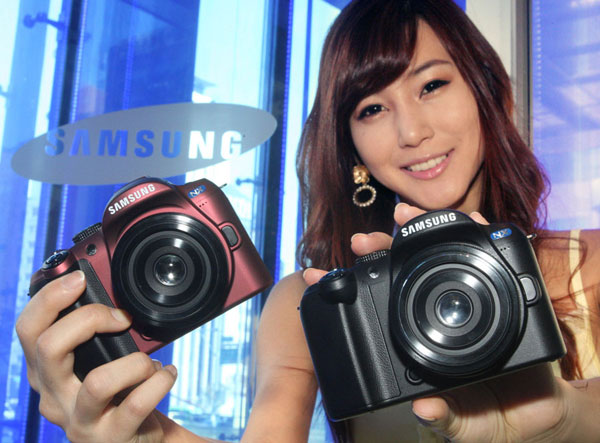
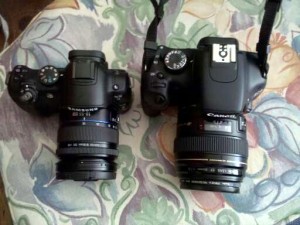
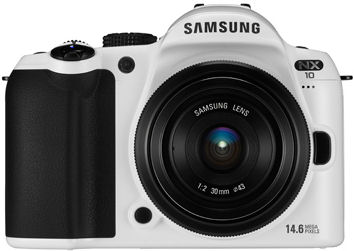
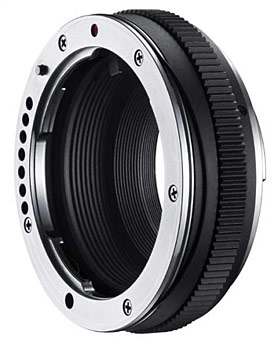

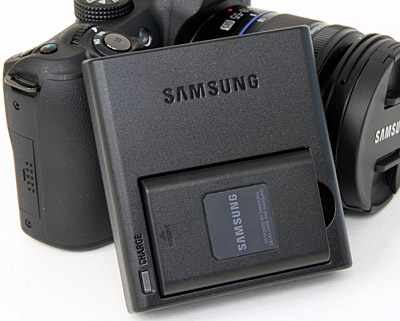

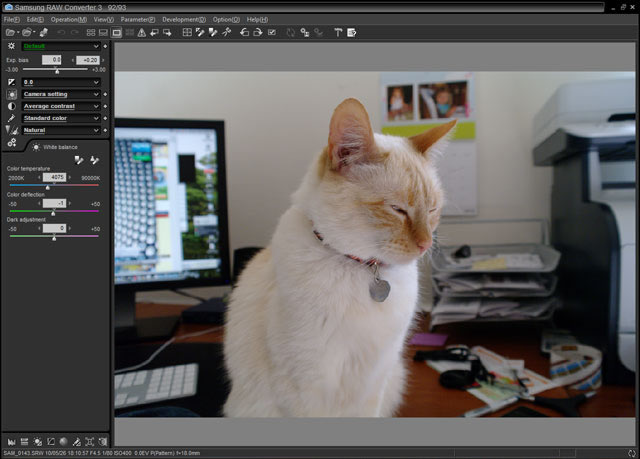
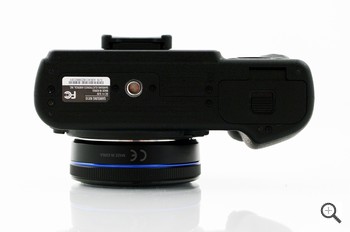
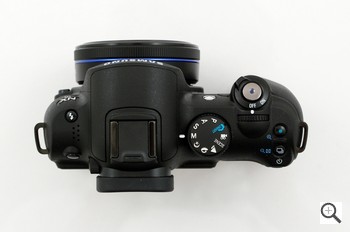
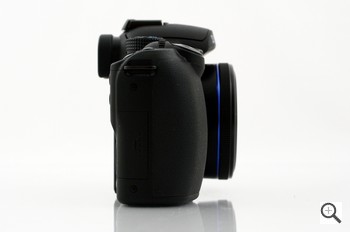
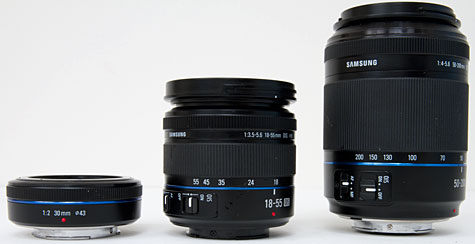
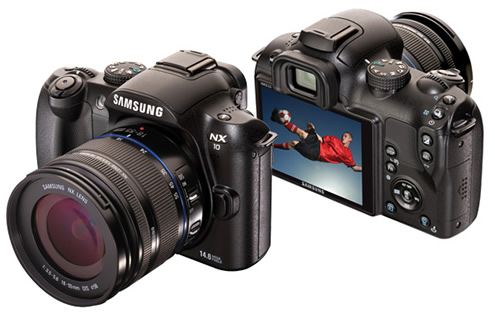
![Read more about the article Apple’s New iMac Coming in March[Report]](https://thetechjournal.com/wp-content/uploads/2011/02/imac-300x153.png)
Pingback: Fantabulous In Fast Enchant Of Short Moments With Samsung NX10 |
Regarding the electronic viewfinder comparison with the Panasonic G-1 and GH-1, I disagree strongly. The Panasonic EVF is much clearer and sharper than the Samsung and its eye detection works well, unlike the Samsung. As a spectacle wearer, I find the Samsung EVF very frustrating.